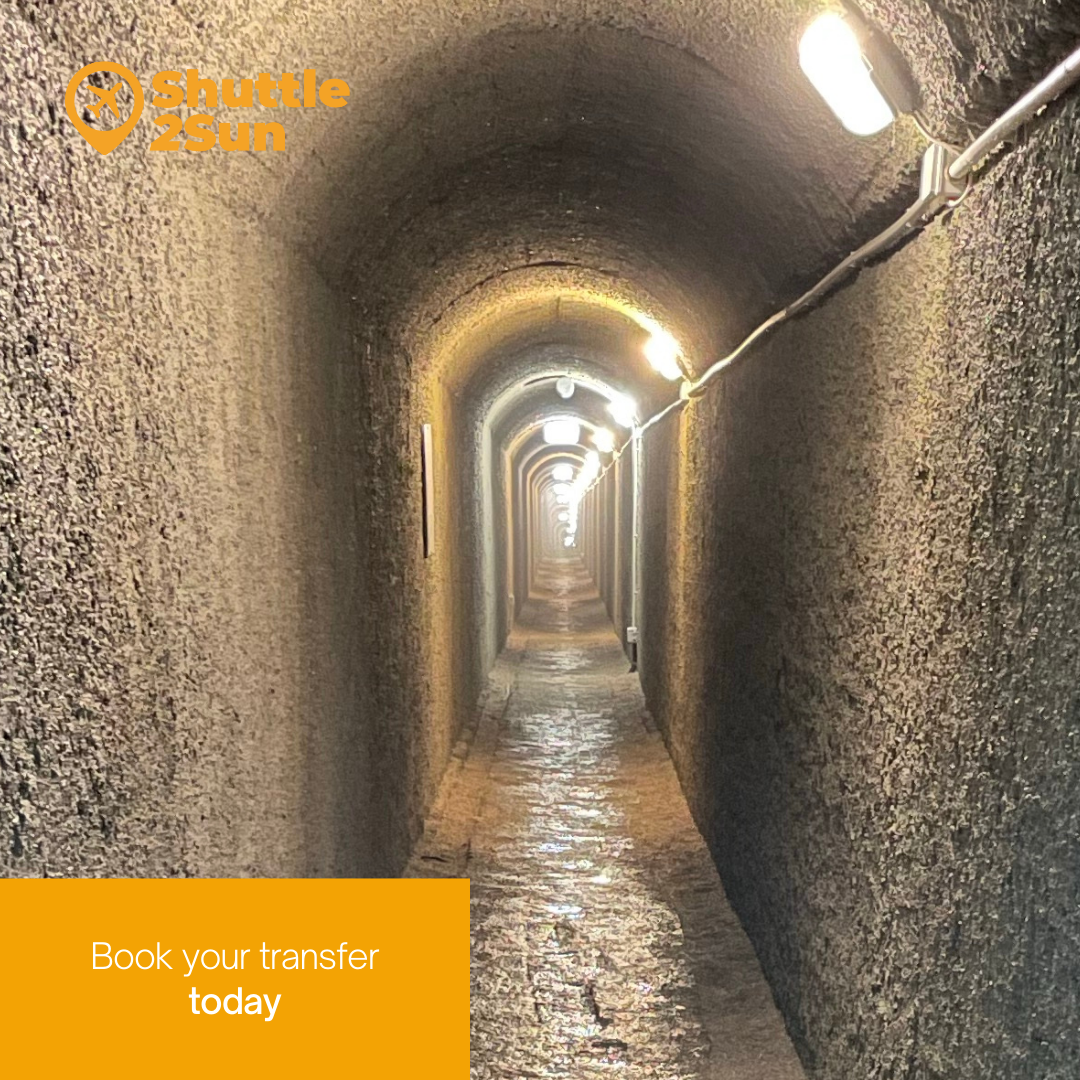Every day, Barcelona is visited by thousands of visitors who flood its streets to discover every corner of the city. Ramblas, L’Eixample, Parc Güell, Sagrada Familia and Casa Batlló are some of the most popular places for tourists, who remain spellbound, admiring its beauty. But, beyond the surface, metres below the ground, there are many places which, in ancient times, were of use and were visited by those who did not want to be seen.
Although it is not so well known, underground Barcelona is an ideal alternative proposal for those who have already seen and enjoyed the most emblematic sites and are looking for an interesting adventure.
If you visit Barcelona, we encourage you to discover this unknown part of the city that will not leave you indifferent. If you want to get there comfortably, we recommend you the shared transfer services and private transfer services, low-cost and sustainable, offered by Shuttle2Sun, available from Barcelona airport, Barcelona port, Reus airport, Girona airport and Camp de Tarragona AVE train station.
Air-raid shelters
Catalonia was a territory that, like the other autonomous communities, was severely affected by the Spanish Civil War, between 1936 and 1939, which put an end to the Republican government.
One of the most critical moments in terms of bombing was on 16th, 17th and 18th of March 1938, carried out by Italian planes under Mussolini‘s orders.
As a result, and with the aim of saving the lives of civilians, many air-raid shelters were set up throughout the city during the war years, which eventually totalled 1,322, especially in the districts of L’Eixample, Ciutat Vella, Sants-Montjuïc and Sant Martí, among others. The only neighbourhood that does not have this type of bunker is Barceloneta, due to the shallowness of the area, as it is located next to the sea.
One of the most characteristic and best preserved is Refuge 307, built by the residents of the small neighbourhood of Poble Sec, which could be accessed through three entrances distributed along Carrer Nou de la Rambla.
This underground space included some 400 metres of tunnels, which connected different rooms, such as toilets, a fountain, an infirmary room, as well as an area dedicated to children and the home. This refuge can be visited by prior reservation.

In Gràcia neighbourhood you will find another of the most important shelters, Plaça del Diamant shelter, which occupies the entire underground esplanade of this square. This bunker, which can be accessed from the square itself, is 13 metres deep and has a capacity for 270 people. It can be visited every Sunday morning throughout the year.
Another of these is the 267 shelter in Plaça Revolució, which has been partially demolished for the construction of a car park. What little remains of this place has been converted into a small museum, open to the public.
In addition to the shelters found under squares and main roads, there are also many hidden under buildings, such as, for example, bunker 312-3 under Mas Guinardó, known as ‘Flors de Maig’, after the name of one of the access streets. Today, one of the sections has disappeared, and the existing area can be visited from time to time on guided tours. Another of these shelters is Palau de les Heures, a modernist building that was once the residence of the President of the Spanish Republic.
Discovering the Civil War air-raid shelters is an alternative route if you want to discover an unknown Barcelona. Get to Barcelona in a comfortable way, with the shared transfer services and private transfer services, low-cost and sustainable, offered by Shuttle2Sun, from Barcelona airport, Barcelona port, Reus airport, Girona airport and Camp de Tarragona AVE train station.

Water tanks
Underground Barcelona has a wide range of underground water tanks, such as that of King Martí I the Humane, which is located under his former residence, next to Torre Bellesguard, an extensive space designed by the renowned Catalan architect Antoni Gaudí. Also, the rainwater tank under Parc Güell, also by the same artist.
The tunnel connecting Casa de l’Aigua de la Trinitat Vella with Casa de l’Aigua de la Trinitat Nova, built in the second decade of the 20th century by the company Aigües de Montcada, is also worth mentioning. And the underground rainwater tank in Parc Joan Miró, with a capacity of some 70,000 cubic metres.
Ghost metro stations
The first metro line to be built in Barcelona was inaugurated in 1924, initially with only four metro stations. Over the years, the underground network has grown considerably, and today there are up to 8 different metro lines, with 165 metro stations.
With the growth of this complex network, some of the metro stations have fallen into disuse, becoming what are known as ‘ghost stations‘. Currently, there are as many as 12 abandoned spaces.
Some of them were never opened to the public, such as Banco metro station, on line 4, or Gaudí metro station, on L5, built in 1952. There is also Correos metro station, closed in 1972, which still preserves some advertising posters from before its closure, as well as Ferran metro station, closed in 1968, and Bordeta, an open-air metro station, whose activity ended in 1983. Others were never built, such as Travessera, on line 3.
Other underground spaces
In addition to the underground spaces mentioned above, there are others that are also important in Barcelona’s history, such as the extensive network of sewers that runs the length of the city, with 1,700 kilometres of tunnels. It is worth noting that this complicated labyrinth was the scene of the escape of prisoners from Barcelona’s La Model prison. Other places of interest include Born Market site and the Arab bath at Aire Barcelona.
Discover the underground Barcelona! Remember that Shuttle2Sun offers shared transfer services and private transfer services, low-cost and sustainable, from Barcelona Airport, Barcelona Port, Reus Airport, Girona Airport and Camp de Tarragona AVE train station.



